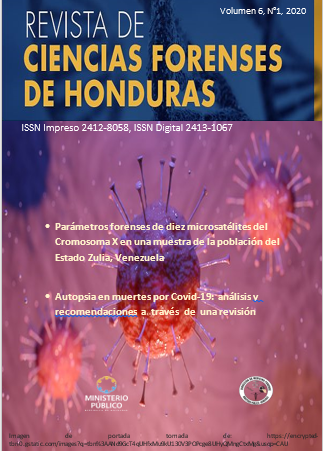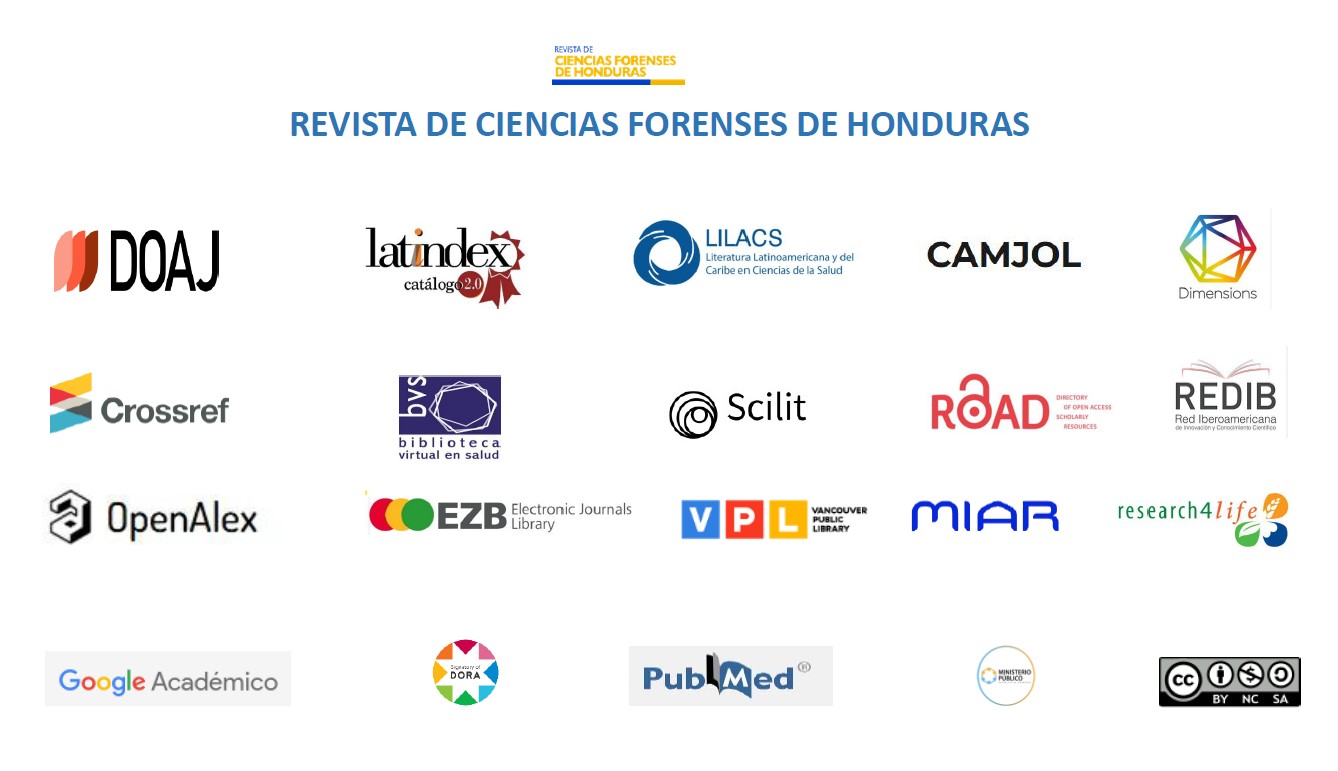Autopsia en muertes por Covid-19: análisis y recomendaciones a través de una revisión
DOI:
https://doi.org/10.5377/rcfh.v6i1.9939Palabras clave:
COVID-19, SARS-CoV-2, Autopsia, Hallazgos Postmortem, Revisión bibliográficaResumen
Justificación: La autopsia es el procedimiento fundamental para determinar las causas de muerte, provee información crítica para ser correlacionada con la clínica, epidemiología y fisiopatolología de enfermedades con altas tasas de mortandad. Los hallazgos patológicos de las autopsias deben confirmar el diagnóstico clínico y determinar los efectos del tratamiento para fundamentar terapias eficaces. La infección por SARS-Cov-2 al tratarse de una enfermedad nueva con implicaciones sin precedentes para la humanidad, ha generado múltiples trabajos científicos para entenderla desde diferentes puntos de vista. Objetivos: Los propósitos de la revisión fueron: analizar la literatura disponible sobre autopsias de pacientes con infección por SARS-CoV-2, identificar los principales hallazgos patológicos reportados y determinar las condiciones técnicas en que se hicieron esos procedimientos. Metodología: Se utilizaron los buscadores bibliográficos (PubMed, Google Scholar, Dialnet, Scielo), usando las palabras Autopsia, Postmortem y COVID-19, para localizar la literatura sobre las autopsias de pacientes con infección por SARS-CoV-2. Resultados: Se obtuvieron 16 artículos científicos que cumplieron los criterios de búsqueda, en siete se reportaron 83 autopsias de 54 varones y 16 mujeres, con edad promedio de 60,91 años. El análisis anatomopatológico se enfocó especialmente en los pulmones, que macroscópicamente estaban pesados por edema y congestión. Microscópicamente había daño alveolar difuso (membranas hialinas o de organización con angiogénesis y microtrombos) e infiltración linfocitaria intersticial. En 18 autopsias también analizaron otros órganos como corazón, hígado, riñón y bazo. Conclusión: A pesar del incremento de trabajos de investigación sobre la enfermedad, Covid-19 los estudios basados en autopsia son muy escasos y limitados. Un aumento en el número de autopsias realizadas a los fallecidos por COVID-19 proveería mayor conocimiento de las características de la enfermedad, la causa de la muerte, la extensión de la misma y efectos del tratamiento.
Descargas
3455
pdf 1313
Publicado
Cómo citar
Número
Sección
Licencia
El autor conserva los derechos de autor bajo los terminos de una licencia CC NC 4.0






